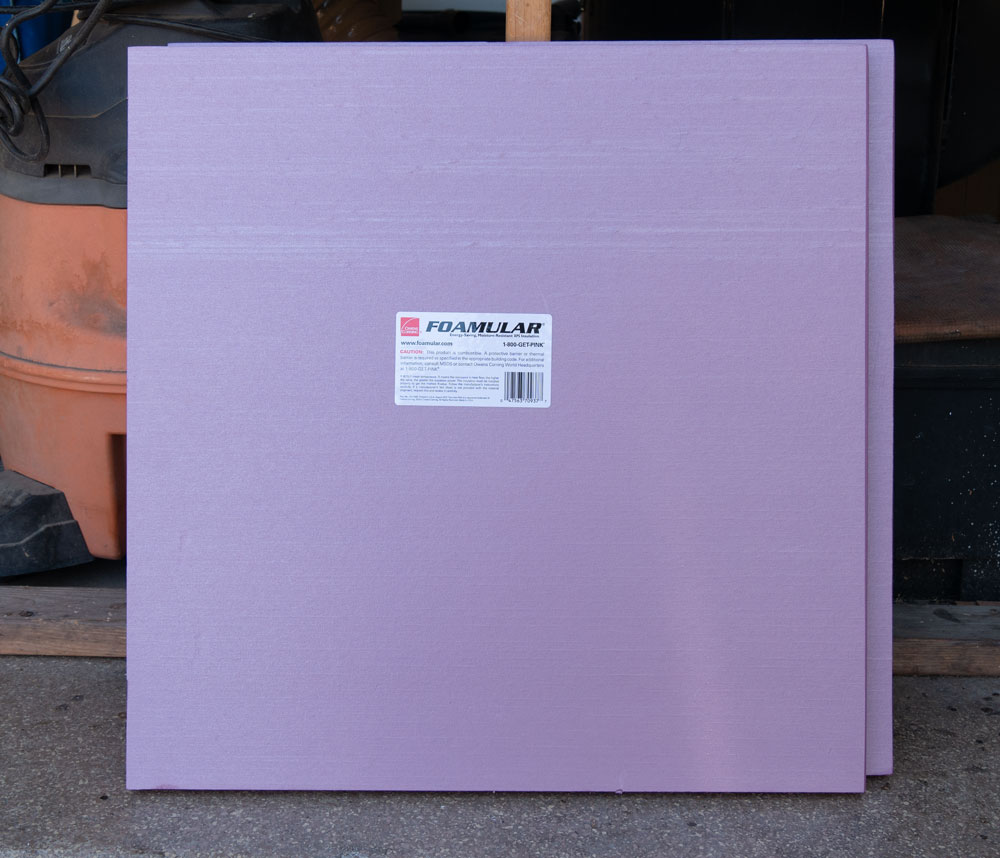
SoCal Beekeeping
Adding Insulation to the Hive Covers
January 3, 2019
P. Michael Henderson
The interior of a beehive is warm and moist. The bees keep the brood area about 90 to 95 degrees Fahrenheit by "shivering" their flight muscles. Doing that requires energy, which they get from the metabolism of sugar in the honey. But the metabolism of sugar gives off water vapor. The chemical formula is:
6O2 + C6H12O6 --> 6CO2 + 6H2O
[Let me add an aside here: Sucrose (table sugar) is C12H22O11, a disaccharide. The bees use an enzyme, invertase, to convert one molecule of sucrose to one molecule of glucose and one molecule of fructose, both monosaccharides, both of which have the chemical equation C6H12O6. Honey, therefore, is made up of glucose and fructose and when the bees use it as food, the equation given above pertains. Glucose crystalizes much easier than fructose so when honey crystalizes, the crystals are generally glucose.]
In this area, nectar is always available and the bees convert nectar into honey by evaporating some of the water in the nectar, which adds to the amount of moisture in the hive.
In the winter, this moisture can condense and cause problems for the bees. If a drop of water falls on a bee in cold weather, it's likely to kill the bee.
This condensation is especially a problem at the top of the hive - water condenses under the hive cover and then drips down into the hive.
Last year, I built bee quilts to address the problem. They worked fairly well, but this year I got to thinking that I should try to address the root problem - the condensation on the underside of the hive cover - rather than just try to keep the condensation from falling on the bees.
My idea is to insulate the top of the hive so that the inner surface of the cover is not cold enough to condense the moisture. I went looking for insulating foam and found this at Home Depot.

There was nothing on the shelf indicating the R-value of this foam. After I got home, I looked it up on the web and it's R-5 per inch. This material is one inch. The wood of the telescoping cover and the inner cover contribute about R-2, making the top an R-7. I don't know if that will be enough. If not, I'll put another inch of this foam in the top, giving me an R-12, which should be enough.
Here's one of the telescoping covers. The sides are 2 inches inside.
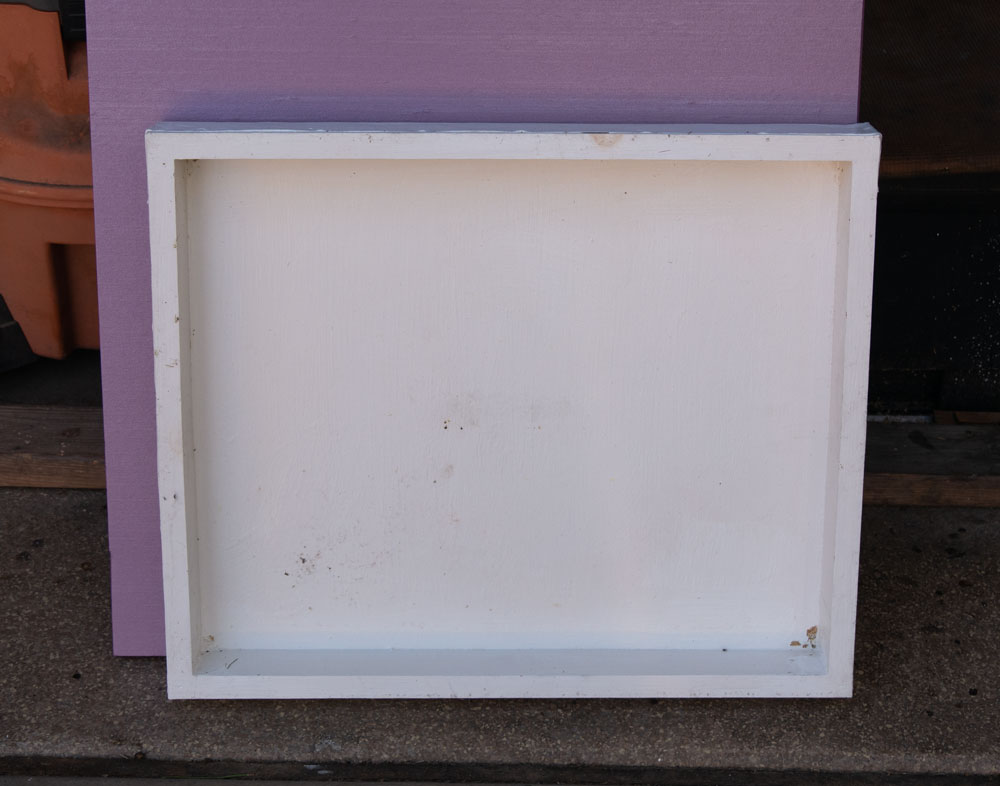
I cut the foam on my table saw - that made a nicer edge than cutting it with a knife - and fit the foam tightly into the telescoping cover.
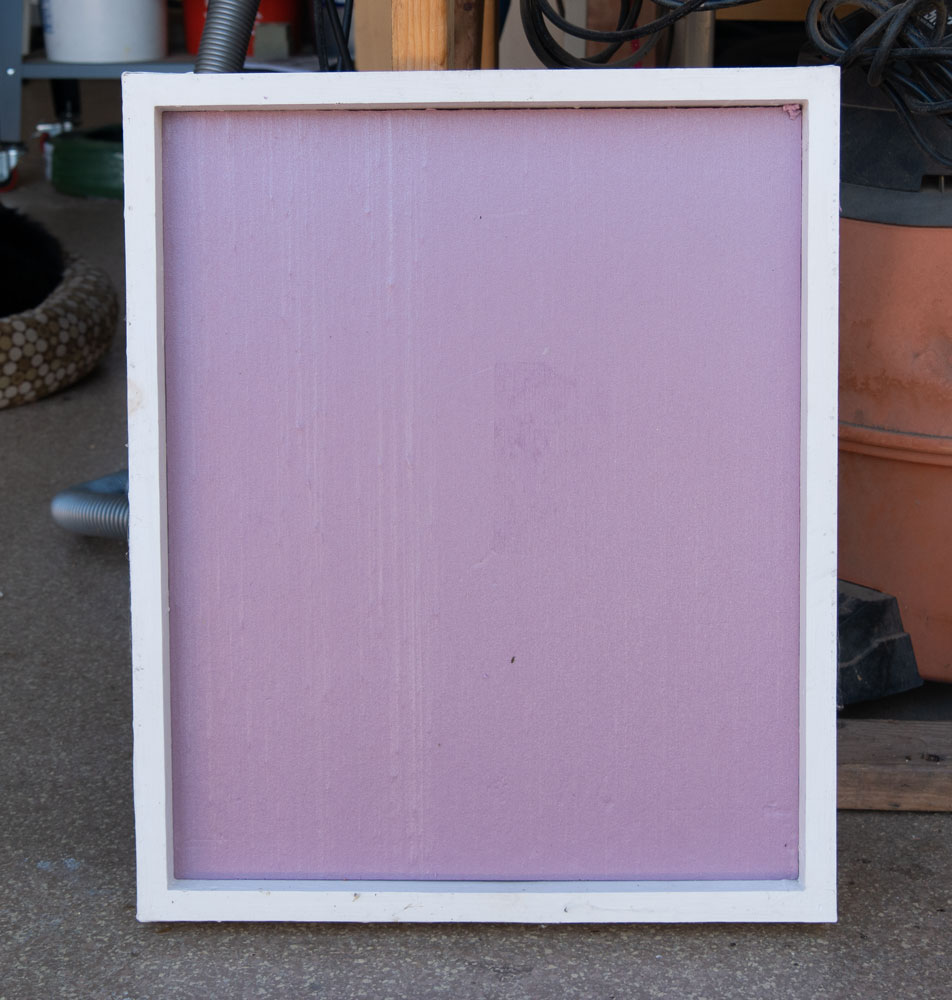
Then I went into my bee yard. Here's the first hive - with three supers.
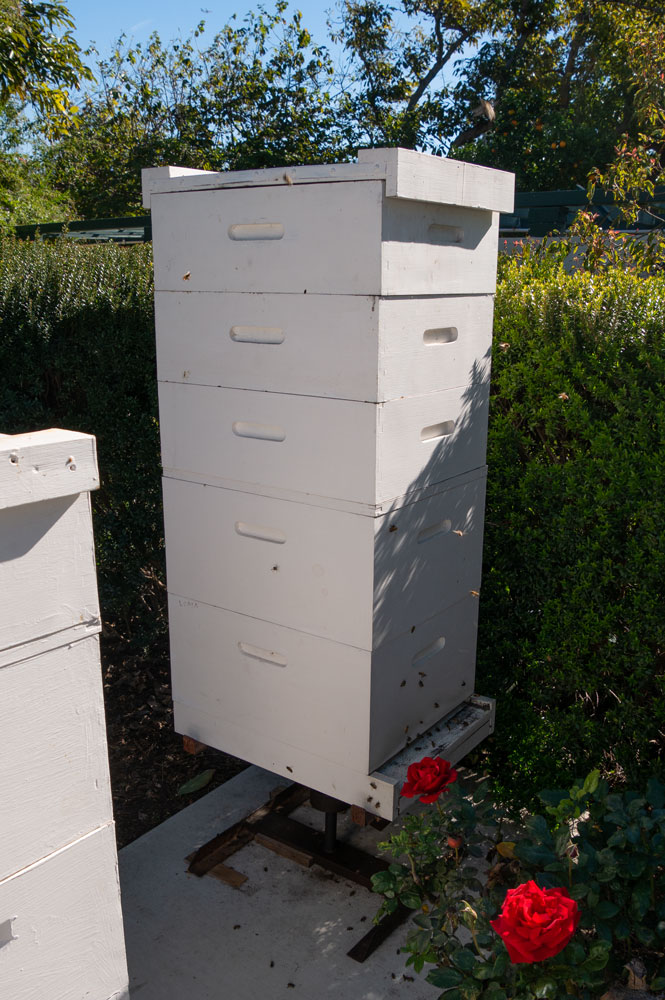
It was afternoon and the sun had been shining on the top of the hive for quite a while. There wasn't a lot of condensate at the top of the hive. You can tell by the discoloration of the outside frame that it had gotten wet more than once.
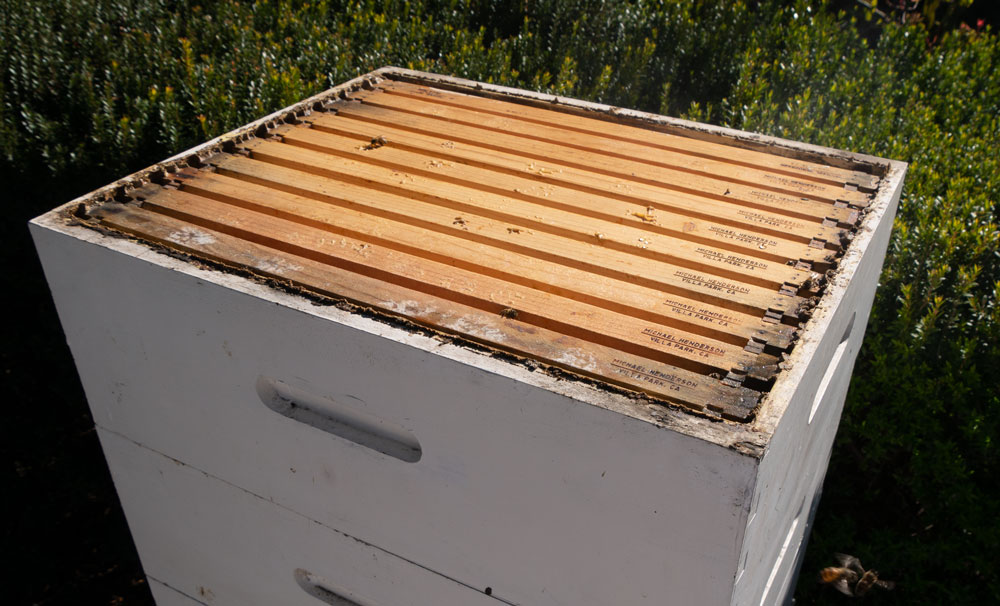
My other hive is under a cover - which I built for summer sun protection.
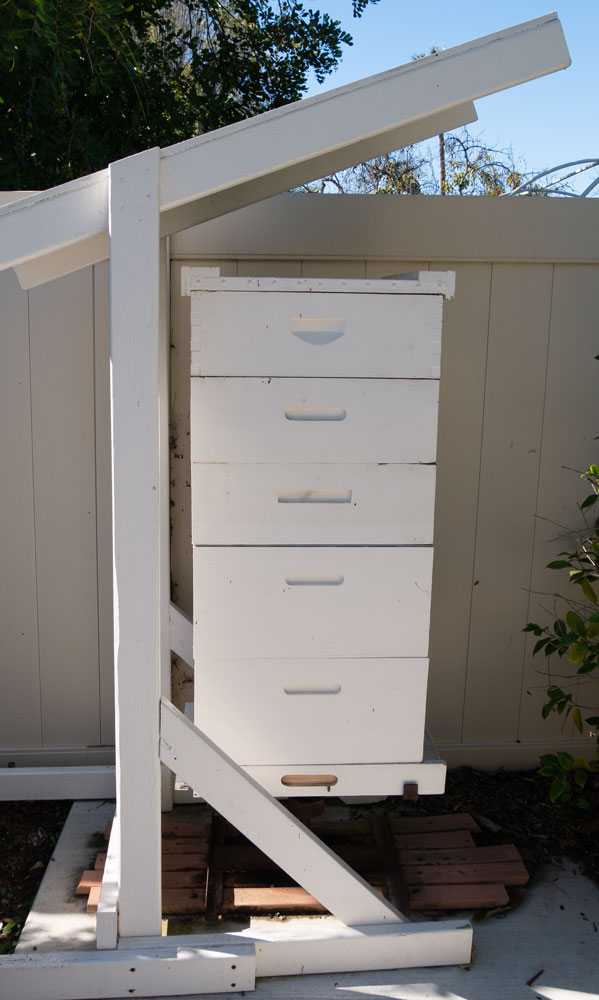
When I took the cover off this hive there was a lot of condensate on the bottom of the cover. You really can't see it in this picture but take my word for it - the cover was very wet.
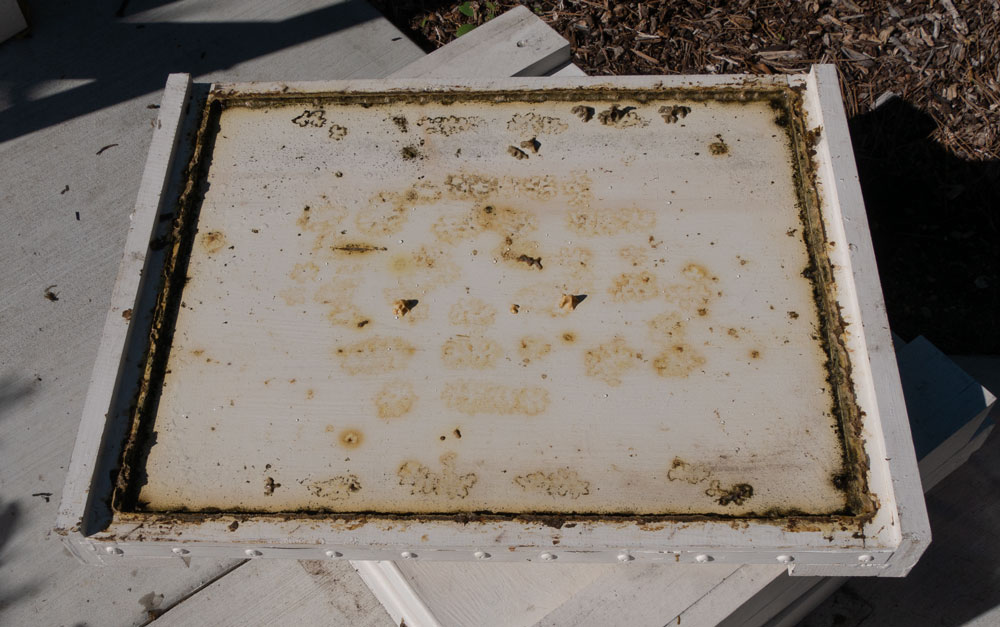
Here's the hive with the telescoping cover with the foam insulation.
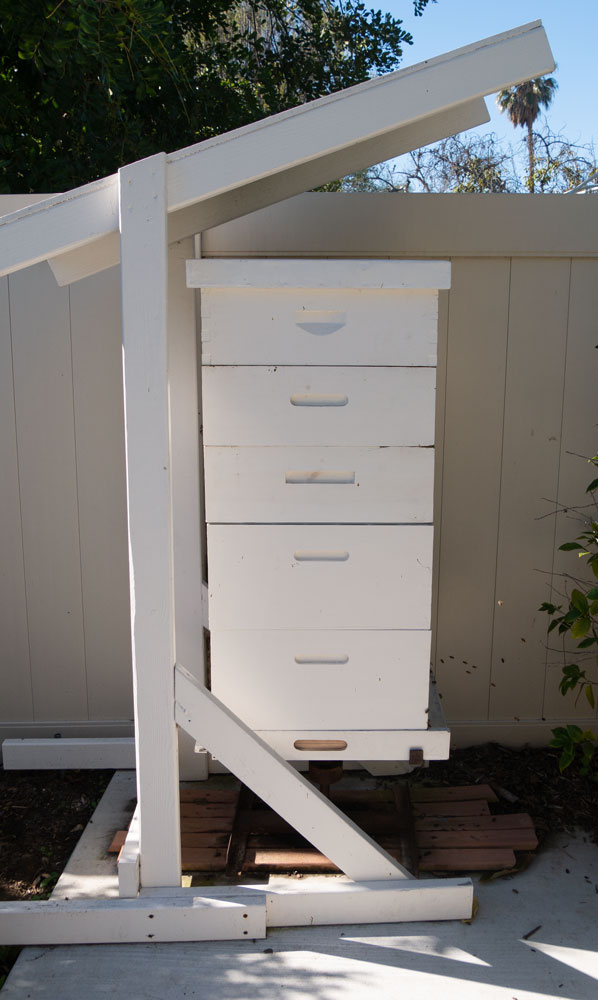
I'm going to check the tops again in a couple of days and see if there's a lot of condensation. If so, I'll add another layer of insulation. If that doesn't eliminate the condensation, I'll put the bee quilts back on, with the two layers of foam in the covers.
+++++++++++++++++++++++++++++++++++++++++++++++++++++++++++++++++++++++++++
1/6/2019 I decided to double up the insulation to give an R-12 in the top. The problem is that the inside depth of the tops is only 2 inches, and I'll be putting 2 inches of insulation in the tops. So I have to make the sides deeper. I'm going to add an inch and a half, making the inside 3 and a half inches.
Here's a top with the 2 inch sides.
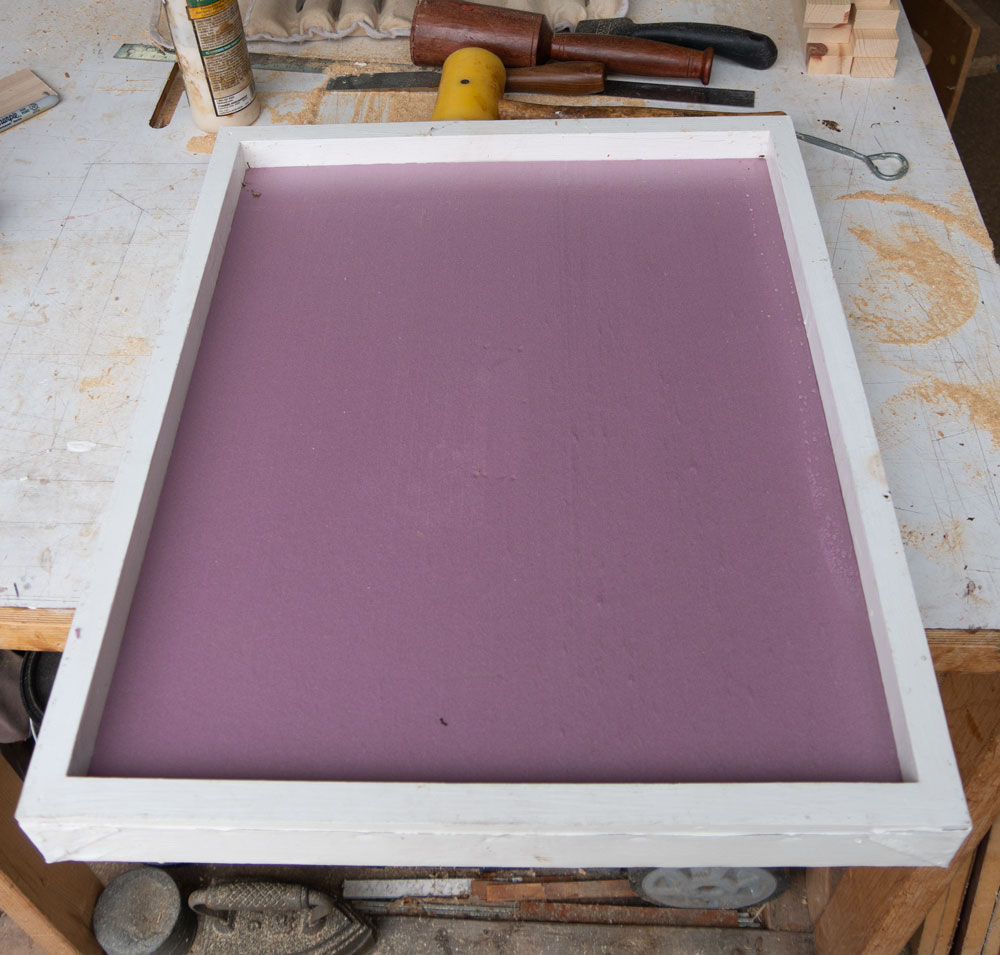
I need to take the paint off of the bottom edges so that I can glue wood to it. I ran the top through my saw and cut a small amount off of each side.
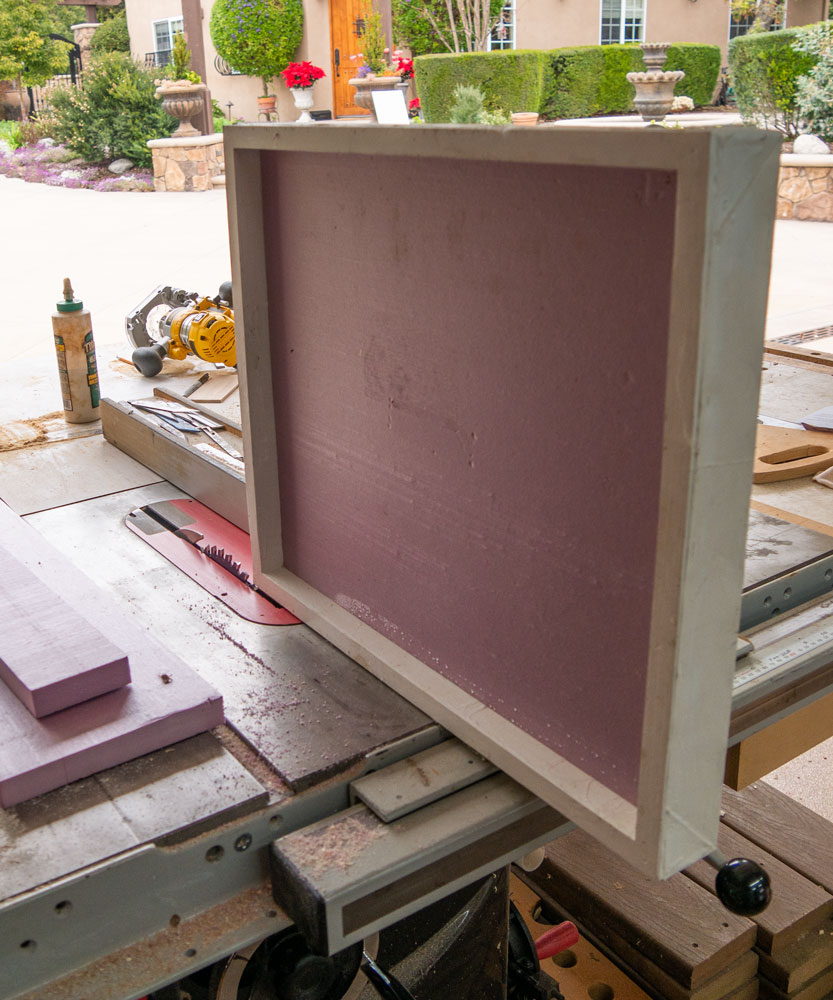
Then I started gluing an inch and a half piece to each side. You can see in the following picture that the paint has been removed and I have one piece of wood clamped on a side.
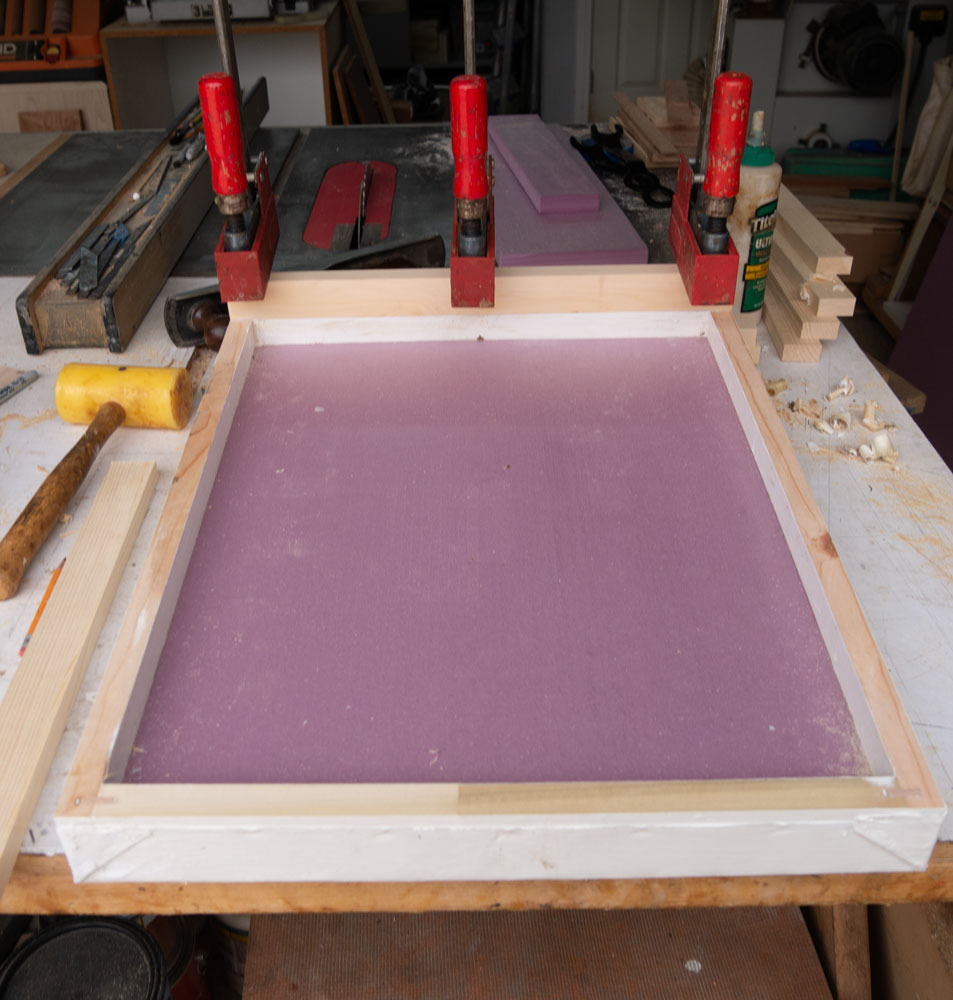
Here's a top with all the extensions glued and clamped.
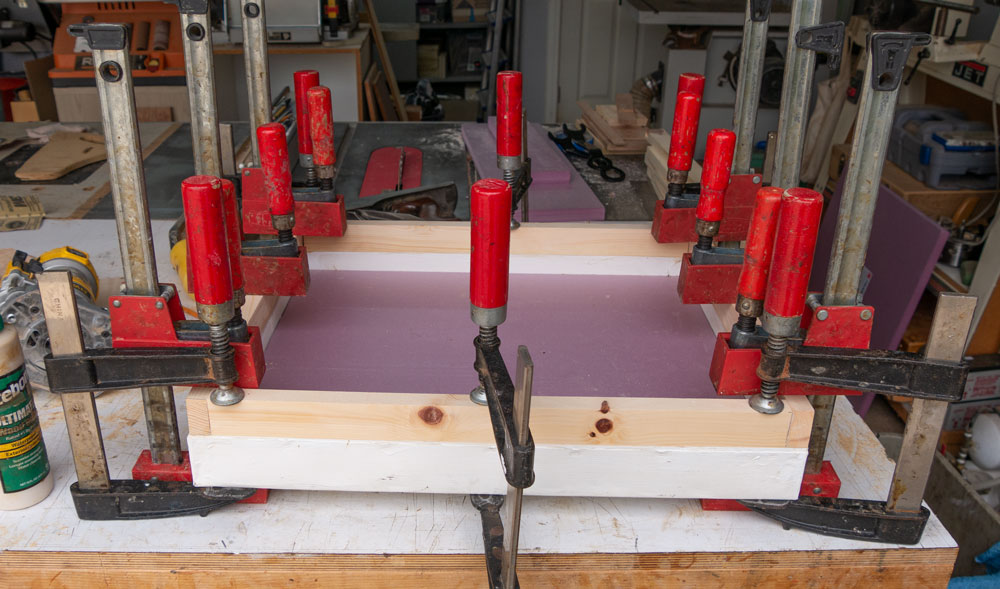
After the glue sets, this is what it looks like.
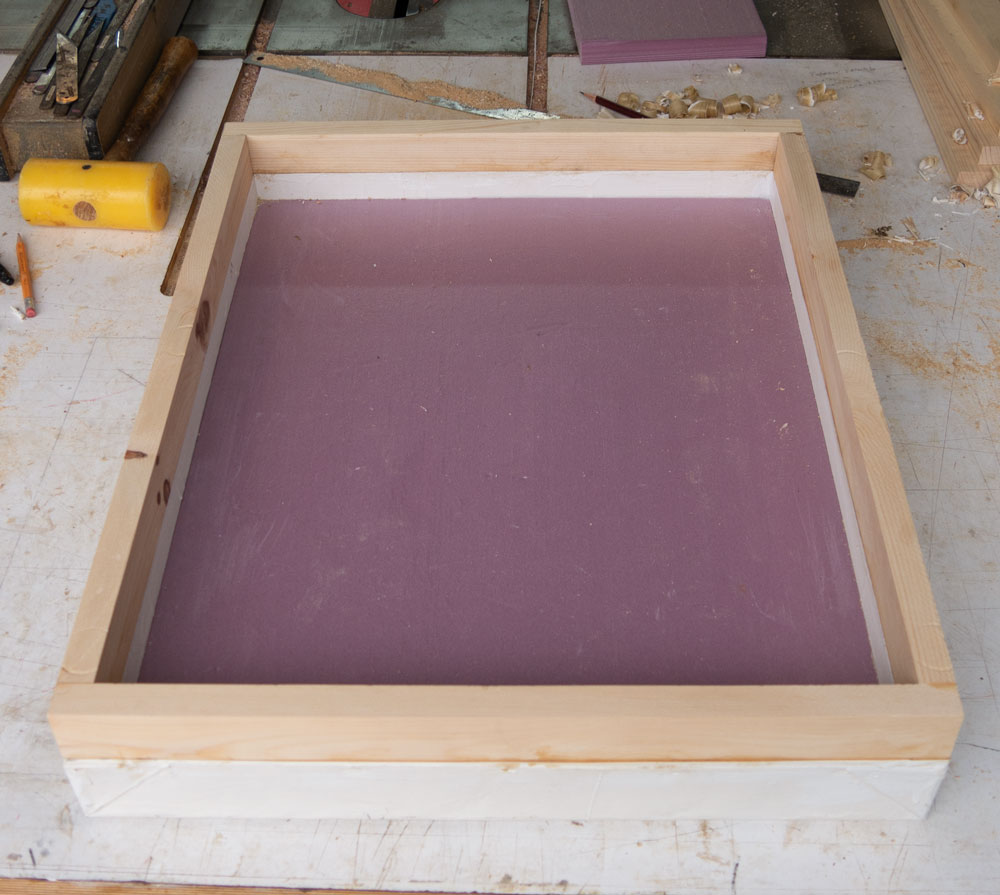
Then it has to be painted. I put a coat of primer on first then the exterior "color coat". This picture just shows the primer coat.

Then I cut another piece of foam to fit inside the top.
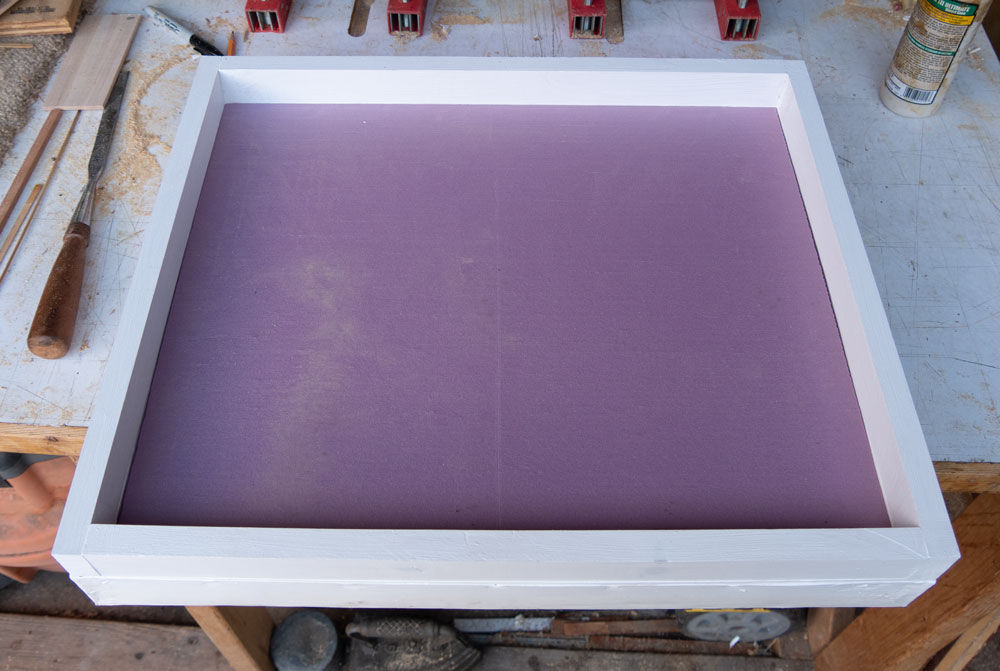
The other thing I wanted to do was work on the inner cover. When I made the inner covers, I put a handhold in the center of the cover. I did this because when I went on the web and searched for inner covers, most of them had a handhold.
But I never used that handhold - I just lifted the inner cover by the outer edges. I didn't want the bees to have access to the foam because I don't know what they might do - whether they might chew on it - so I decide to block up the handholds.
Here's an inner cover with the handhold.
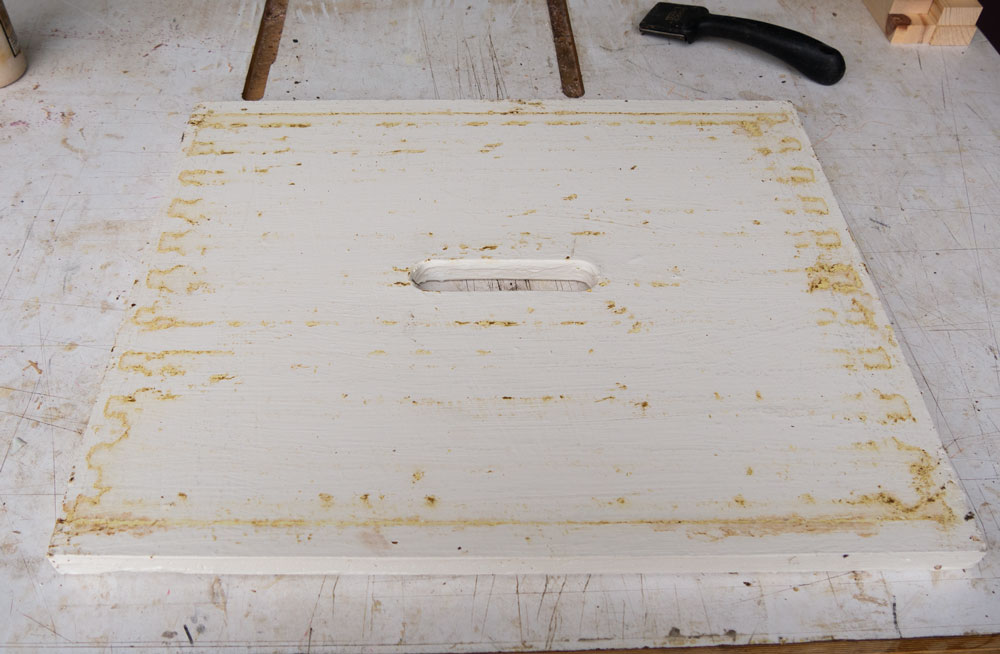
I had some thin scrap and that's what I'm going to use to patch these handholds. In this picture you can see that I'm marked where the piece of wood will go.
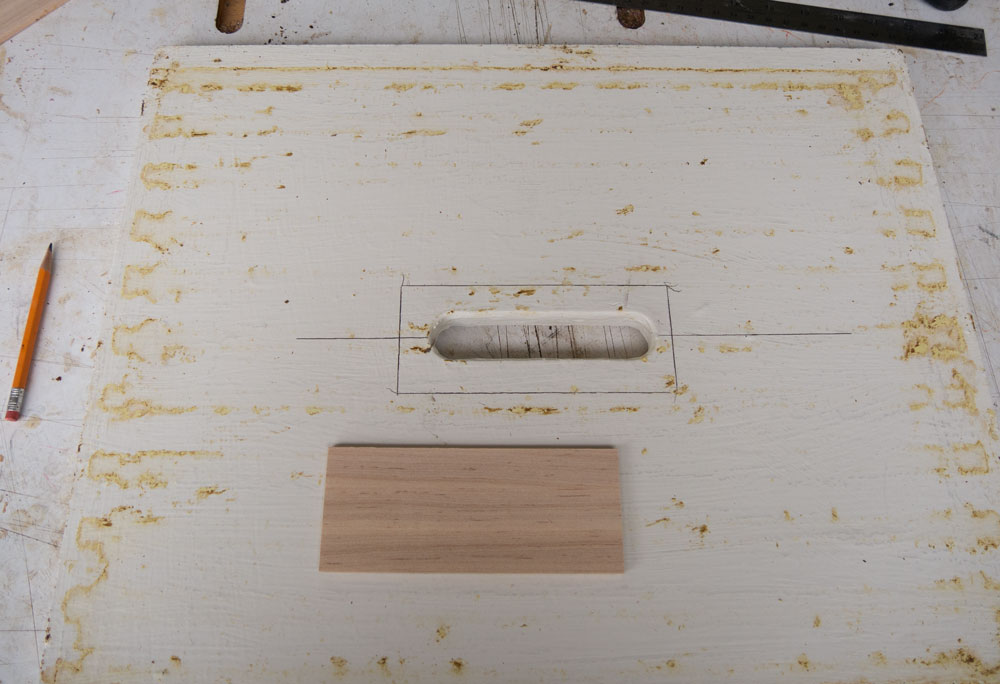
I'm going to route out the area for the patch so I need to set the depth of my router bit to the thickness of the patch.
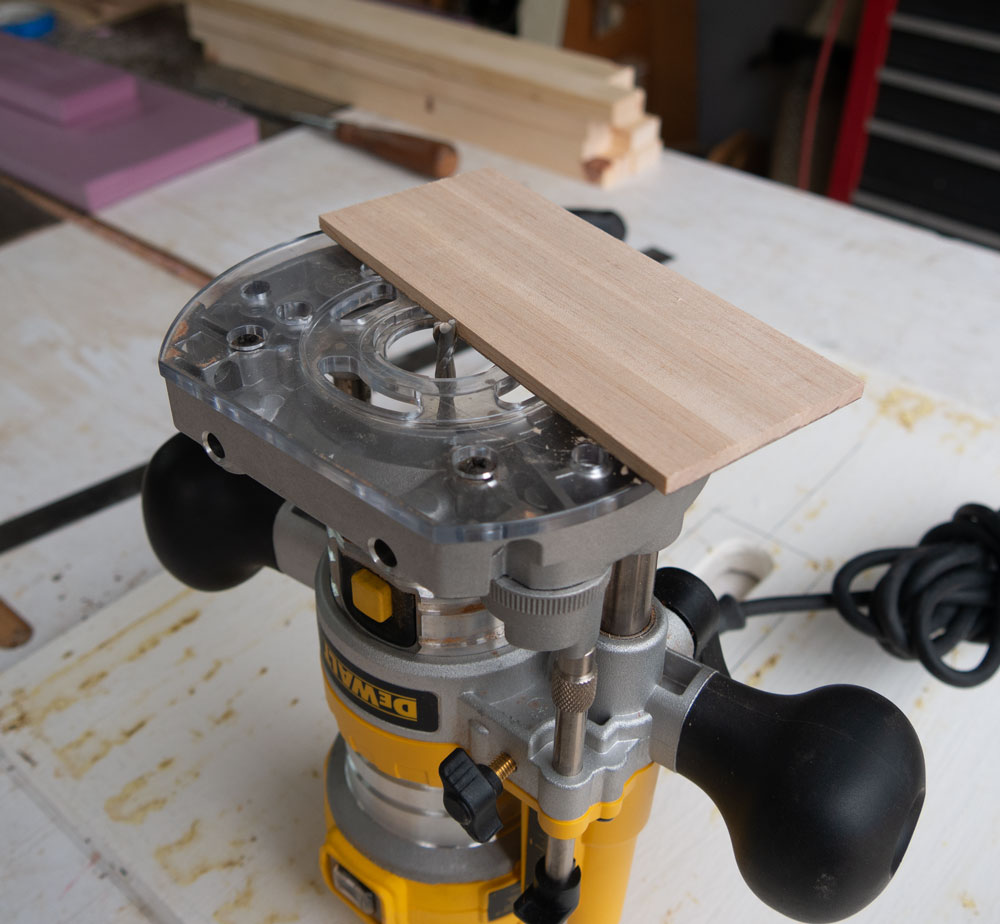
I route close to the lines.
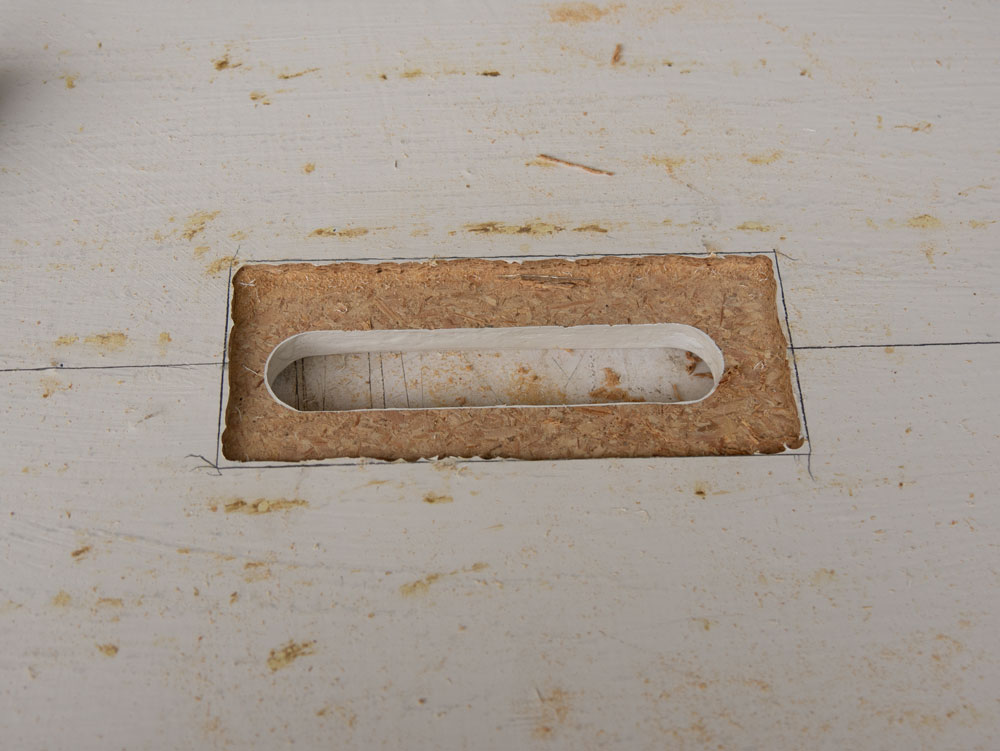
And then clean up with a chisel.
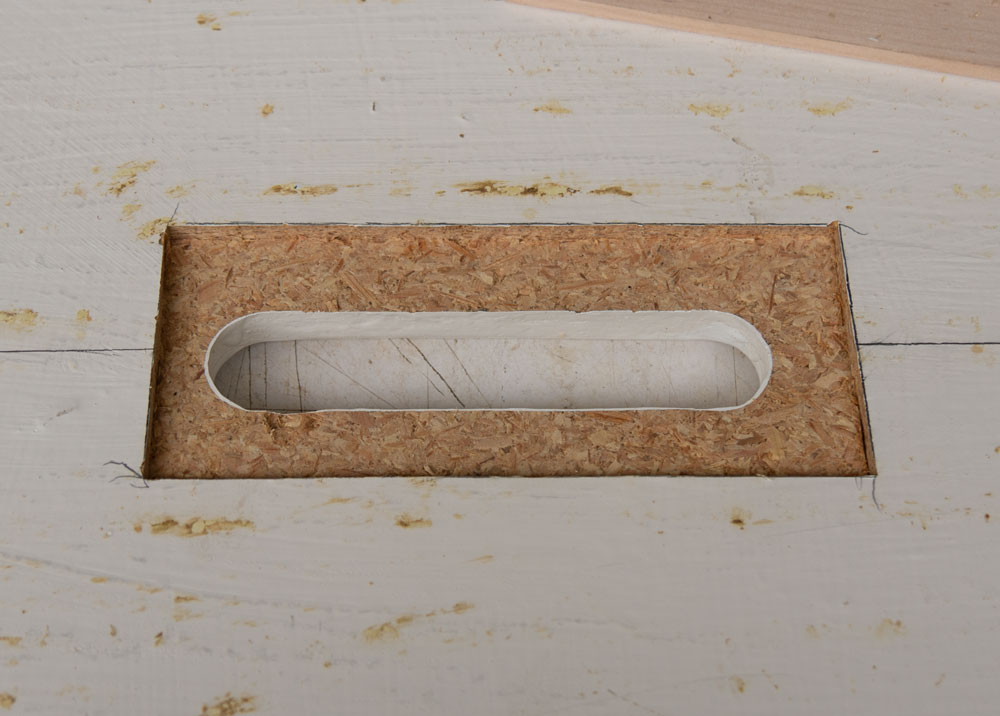
The patch goes in.
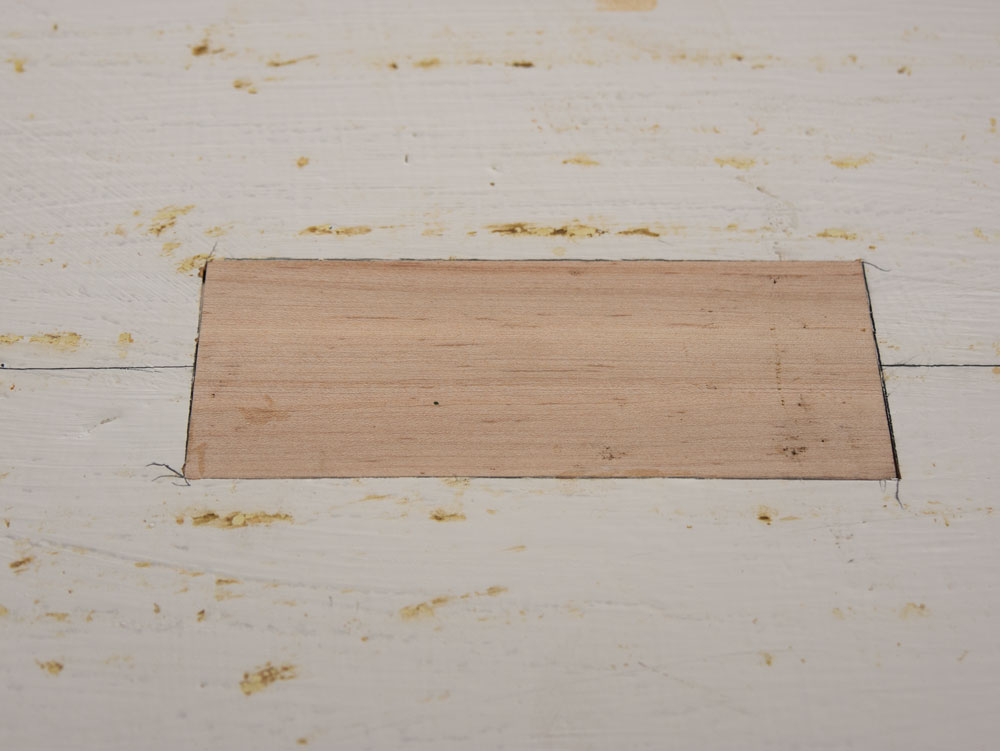
And is glued and clamped.
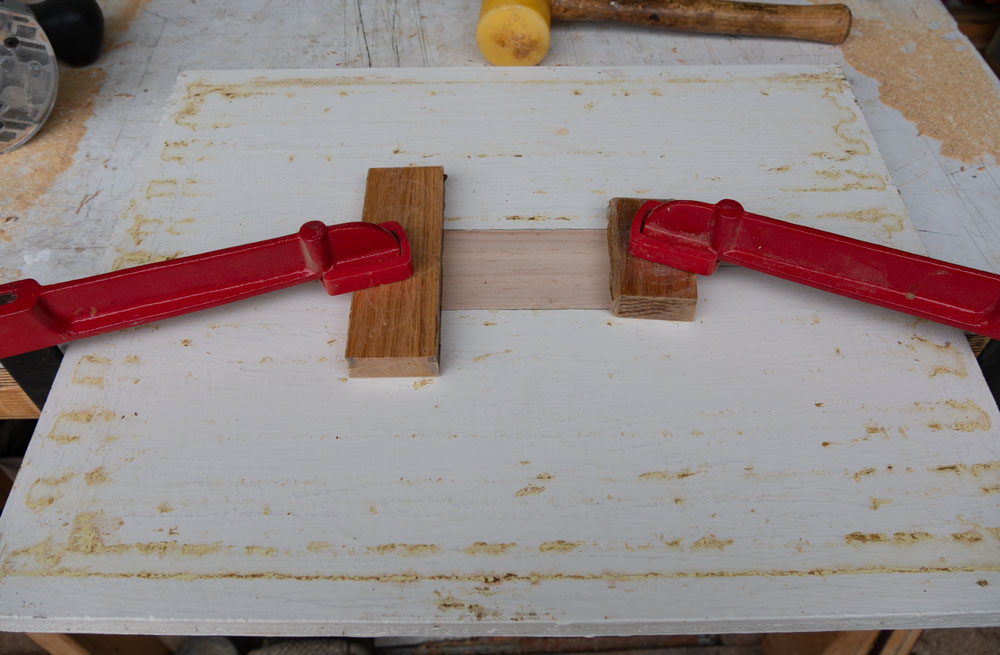
Then the inner cover is painted with primer and an exterior paint. Here's a view of the opposite side - I didn't take a picture of the patched side. It probably doesn't matter but I'll put it in the hive with this side up and the flat side to the bees.
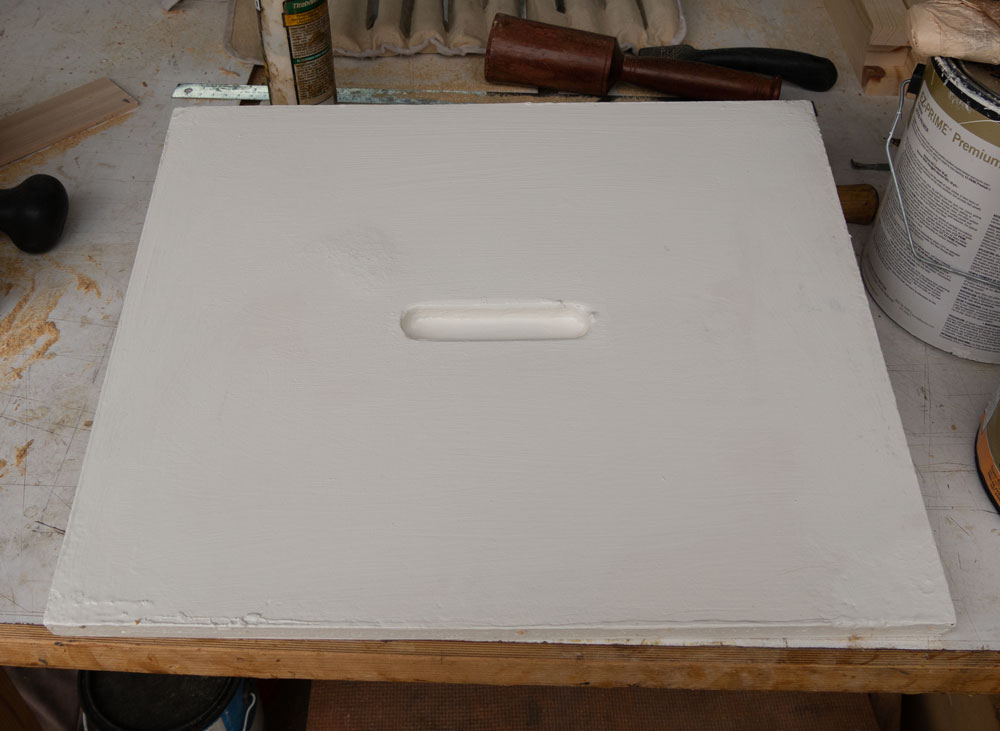
Here's what the hive looks like with the insulated top on it. The top only overlaps the super by about 3/4 inch.
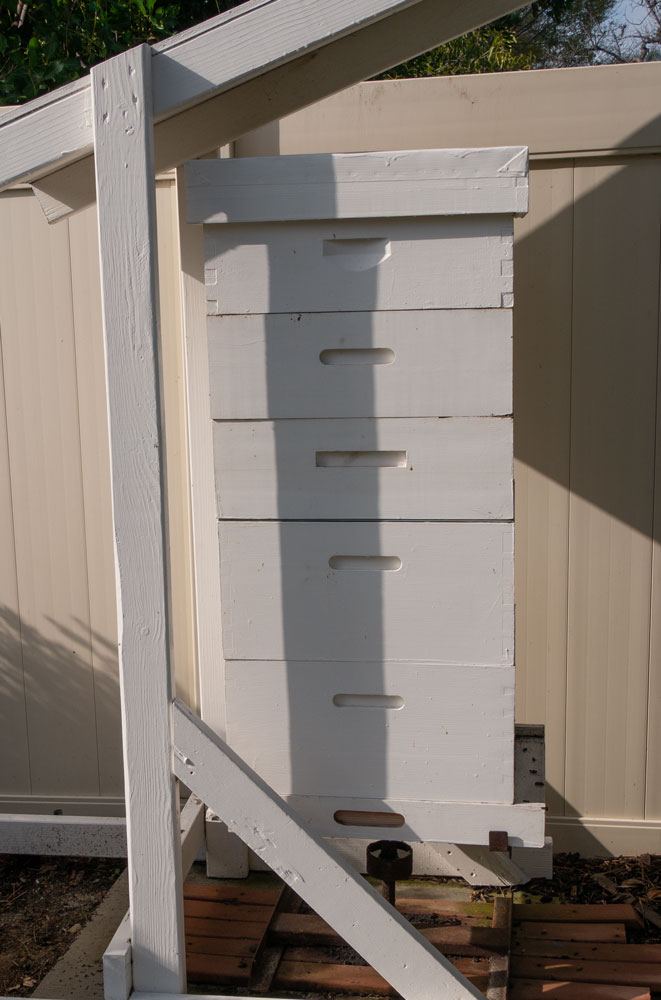
I checked the top of the hive after a fairly cold night and there was only moisture around the outside of the inner top - about one inch around the inner top, about where it rests on the top of the super. So there might be moisture on the sides of the hive, but water won't drop from the top on to the bees.
I'm going to try leaving the insulated top on the hives all year long. It might help reduce the heat load in the summer. I should get some thermocouples and monitor the heat in the hives in the summer.